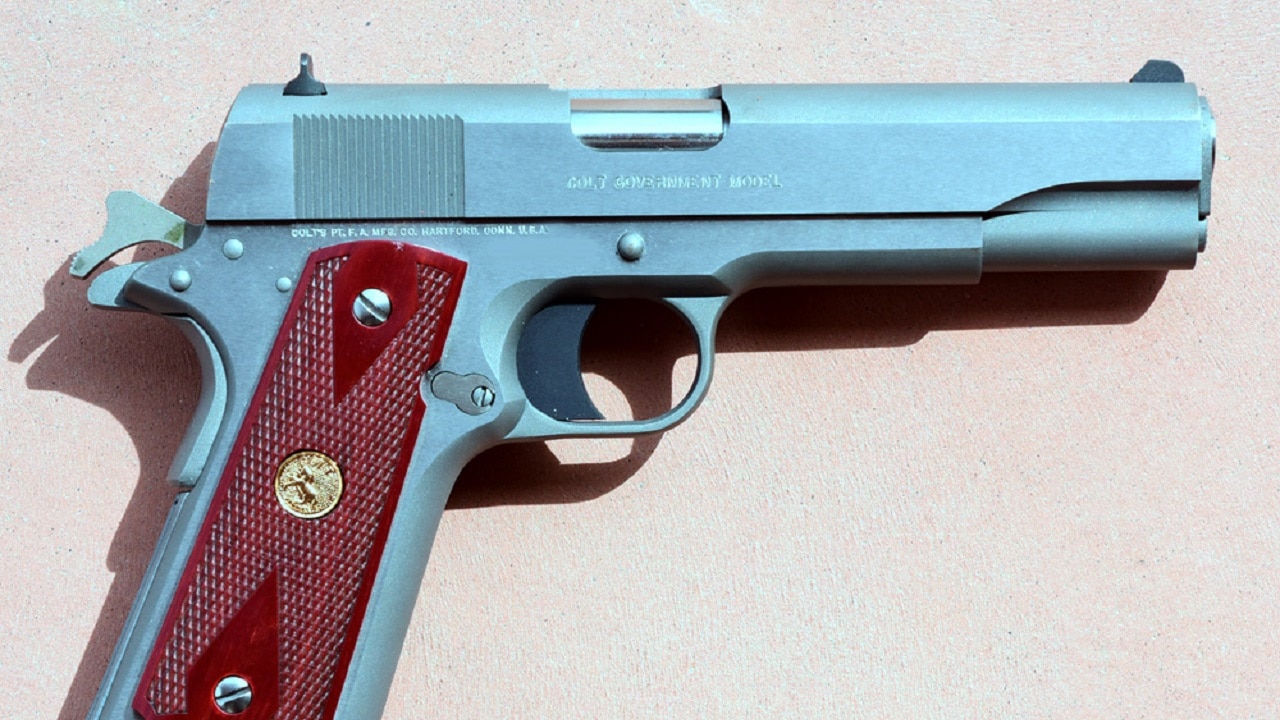Meet the 5 Best Handguns of World War II – Military sidearms are generally associated with NCOs and officers now, but the use of handguns was much more widespread in the Second World War. Many officers went into the fight armed with little more than their trusty pistol or revolver, while other soldiers carried a handgun as a backup. In the case of Germany’s paratroopers, a pistol was actually their only weapon when they hit the ground.
Some of the handguns were certainly better than others. These ones truly stand out as the best of World War II.
5 Best Handguns of World War II: Colt M1911A1 (USA)
Often known simply as the .45, the M1911 was actually a holdover from the First World War. This single-action, semi-automatic handgun was magazine-fed and recoil-operated. As noted by its now-famous moniker, it fired the .45 ACP cartridge.
Designed by prolific gun maker John M. Browning, it was the standard-issue side arm of the United States armed forces from 1911 to 1985. It is actually still used by some U.S. forces today. Some 2.7 million M1911s, including the later M1911A1 variation, were produced throughout its long service with the U.S. military. World War II-era production exceeded 1.9 million units, with versions produced by several companies including Remington Rand, Colt, Ithaca Gun Company, Union Switch & Signal, and even Singer. It is worth noting that so many M1911A1s were produced during World War II that the government never ordered new pistols, relying instead on existing parts inventories in the years following the war. Nothing beats a classic.
5 Best Handguns of World War II: T33 (USSR)
In the 1920s, after the end of the Russian Civil War, the Soviet Union’s Red Army looked to replace the aging and obsolete Nagant M1895 revolver. During the mid-to-late 1920s, a number of pistol designs were considered, and the winner of the bunch was the TT-33 (Tula Tokarev), designed by Russian arms maker Fedor Tokarev. This would become the main service pistol for the Soviet Union, remaining in service through World War II and beyond. It was later adopted by numerous other nations under license.
The Red Army previously had relied on numerous foreign handguns, notably the Mauser C96 “Broomhandle” – which was the basis of Han Solo’s weapon of choice in Star Wars. That weapon’s 7.63mm cartridge had proven reliable. Along with American handgun designs, it served as inspiration for the new Soviet firearm.
Fedor Tokarev noted the popularity of the 7.63x25mm ammo used by the C96 when he designed the TT-33, a short, recoil-operated, locked breech pistol. The handgun design further called up John Browning’s swinging link system, and it liberally “borrowed” from the Colt M1911 pistol. Externally the TT-33 even has a passing resemblance to the earlier Browning blowback-operated FN Model 1903. It is nevertheless incorrect to call the TT-33 an M1911 clone, or to suggest that Tokarev merely adapted Browning’s innovations. It was still a solid design, and the weapon proved reliable in the worst conditions.
By the time Nazi Germany invaded the Soviet Union in June 1941, some 600,000 TT-33s had been produced, and this number increased greatly during what the Soviets called the Great Patriotic War. No definitive number of Soviet-made TT-33s has even been published, but it is safe to say that millions were probably made. However, production was never strong enough to fully push the aging Nagant M1895 pistol out of service. The need for firearms during the war was simply that great.
5 Best Handguns of World War II: Walther P38 (Germany)
The Walther P38 first entered tests in 1938, when it was accepted as the replacement for Luger P08, but it didn’t enter widespread production until 1939. It was originally meant to fully replace the older handgun by 1942, but wartime production never reached full capacity.
The P38 relied on the standard and proven 9x19mm Parabellum cartridge, but other versions were produced in 7.65x22mm and even .22 Long Rifle, while experimental .45 ACP and .38 Super versions were also made in very limited numbers. Originally the handgun was fitted with walnut grips, but as the war continued, those were replaced with Bakelite (a forerunner of plastic). Perhaps because of the reputation of the Luger, the Walther P38 was typically overlooked by American souvenir hunters, and even by gun collectors for many years.
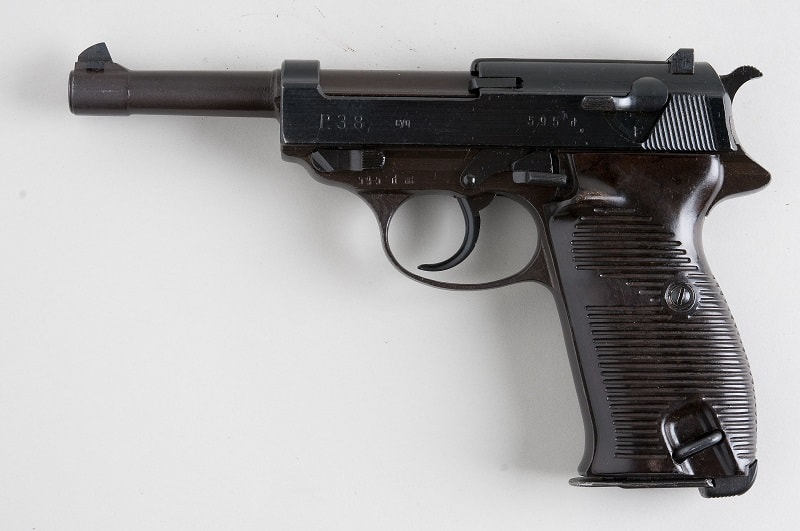
However, the handgun has become more popular with collectors today. It also remains in service with German police units, proving that the P38 was a reliable and worthy successor to the Luger.
5 Best Handguns of World War II: Walther PP and PPK (Germany)
The name Walther PPK probably sounds familiar, as it is the handgun used by the fictional superspy James Bond. But the gun pre-dates the Ian Fleming novels, and certainly the movies. The Walter PP does not mean “Pocket Pistol” as is sometimes noted, but rather “Polizeipistole,” as in Police Pistol, while the PPK was Polizeipistole Kriminalmodell, meaning Police Pistol Detective Model, when it was issued to plainclothes detectives. It is also worth noting that though the gun was used by Nazi German officials, the PP was first released in 1929 and the PPK in 1931, years before the Nazi government came to power.
Both versions are credited with being the world’s first truly successful double action semi-automatic pistols, and hence the action was widely copied – it was used in the later Walther P38. The handguns were used throughout the war, carried mainly by officers. Adolf Hitler used a PPK to take his own life.
Both versions remained in use after the war, and they have seen numerous improvements. The PPK/E is the latest version, and it entered production in 2000. It was still carried by 007 in the most recent film.
5 Best Handguns of World War II: Browning Hi-Power (Belgium/USA)
The gun that John Browning was working on when he passed away is noted for its use by both the Axis and the Allies. After Browning’s death, the handgun’s development was successfully completed by Dieudonné Saive in the late 1930s. At the outbreak of the war, the Hi-Power was mainly produced in Belgium and the United States. Unlike Browning’s earlier M1911, it was chambered for the 9mm and featured a 13-round magazine.
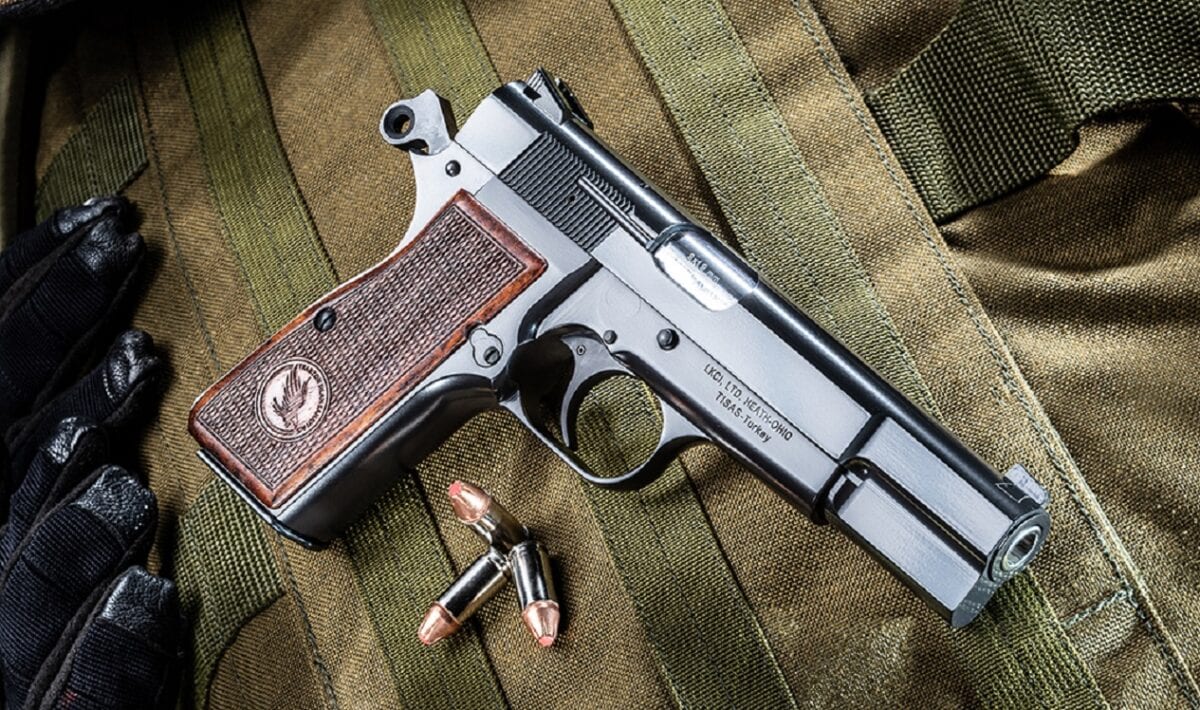
Browning Hi-Power. Image Credit: Creative Commons.
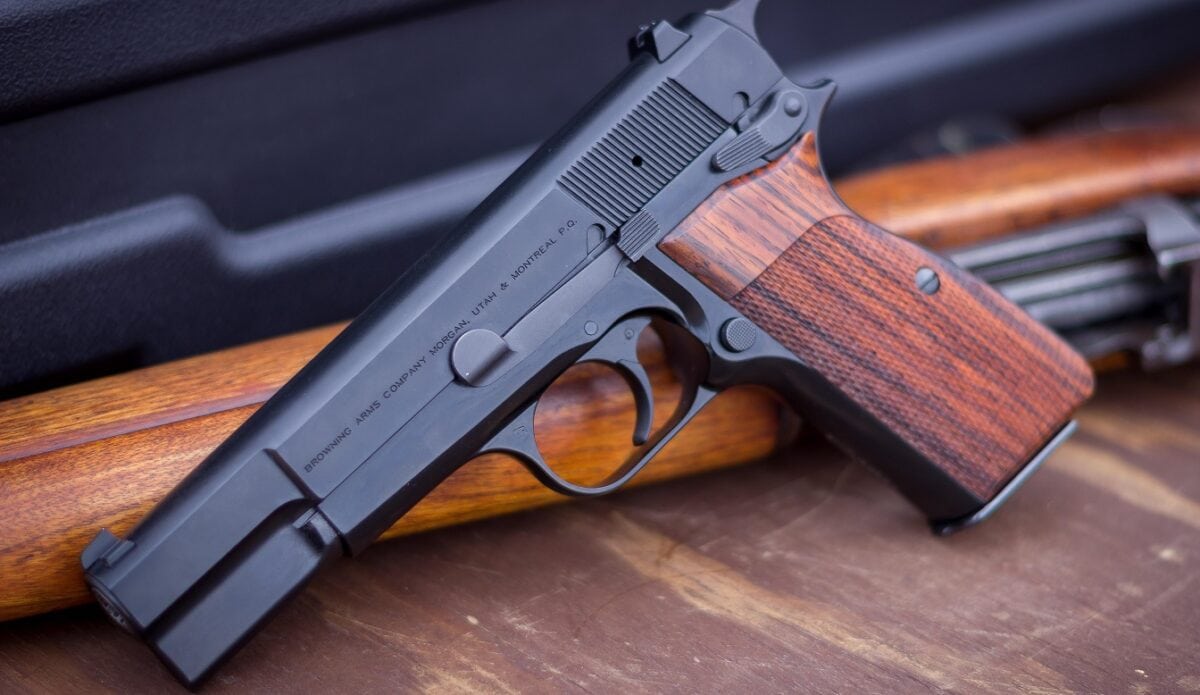
Browning Hi-Power. Image Credit: Creative Commons.
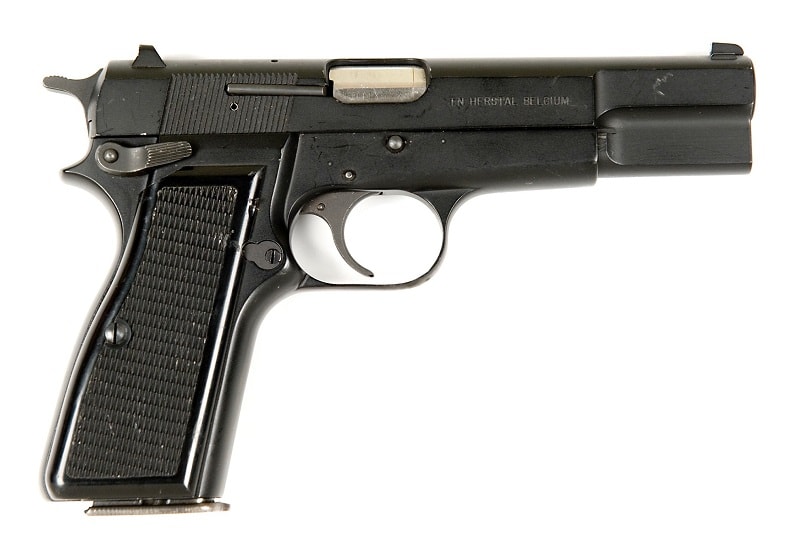
Browning Hi-Power. Image: Creative Commons.
After being occupied by the Germans in 1940, Belgium’s Fabrique Nationale plant produced the weapon for the German military. Exemplars from that factory bear German inspection and acceptance marks, and these guns were widely employed by the Waffen-SS and paratrooper units. It was also a preferred firearm of British officers, notably those serving in the paratrooper regiments, who found it to be more effective than their aging Webley revolvers. The Browning Hi-Power also went on to become one of the most widely used military pistols after World War II, Since its introduction in 1935 the gun has been used around the world, and rumor has it that Iraqi dictator Saddam Hussein was known to carry one.
Bonus Photo Essay: Meet the Glock 19X
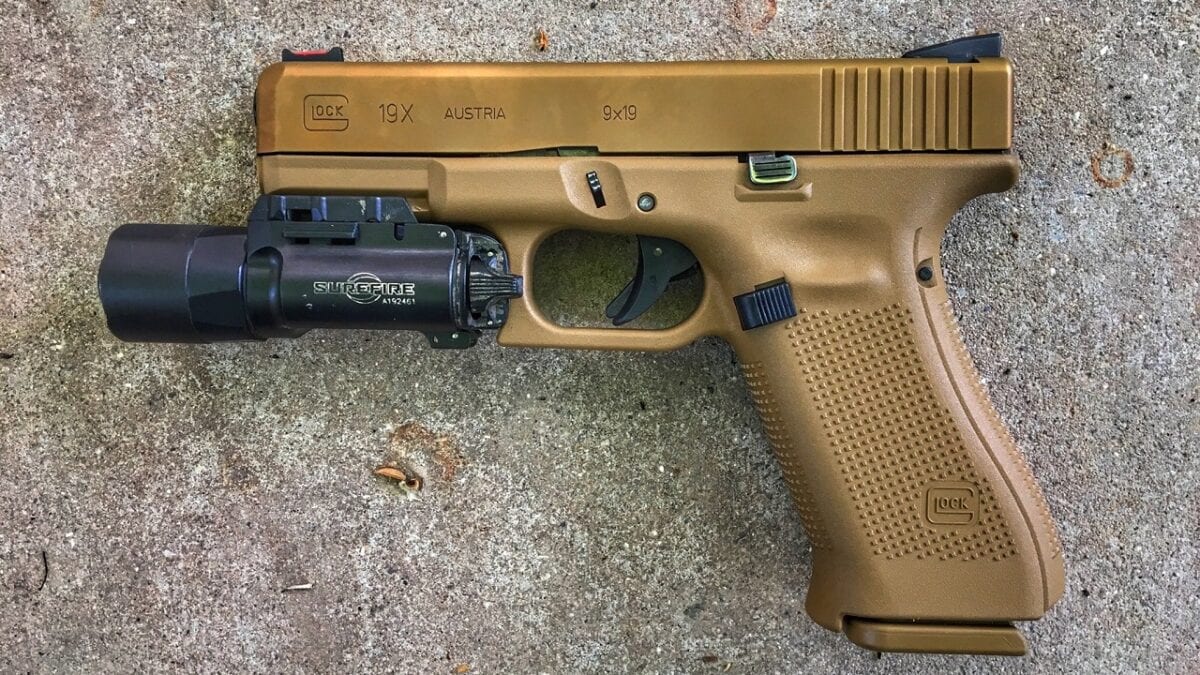
Glock 19X. Image Credit: Creative Commons.

Glock 19X. Image Credit: Creative Commons.
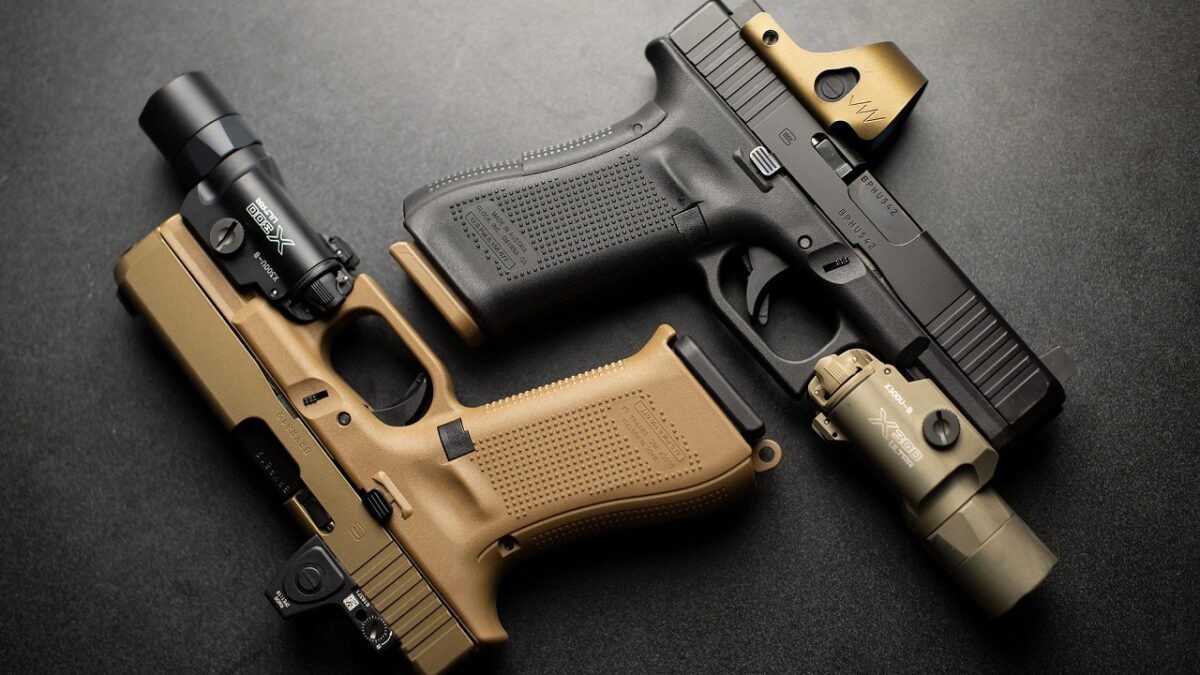
Glock 19X. Image Credit: Creative Commons.

Glock 19X. Image Credit: Creative Commons.
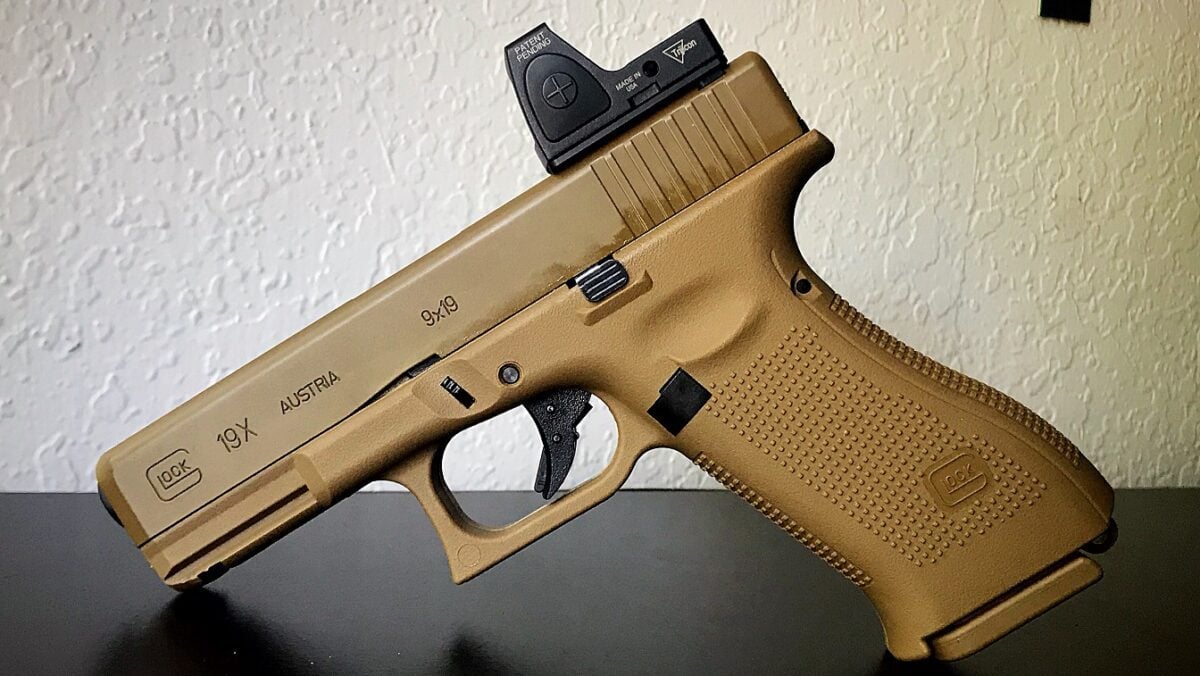
Glock 19X. Image Credit: Creative Commons.
MORE: The F-35 Now Comes in Beast Mode
MORE: Why the U.S. Navy Tried to Sink Their Own Aircraft Carrier
A Senior Editor for 1945, Peter Suciu is a Michigan-based writer who has contributed to more than four dozen magazines, newspapers and websites. He regularly writes about military hardware, firearms history, cybersecurity and international affairs. Peter is also a Contributing Writer for Forbes. You can follow him on Twitter: @PeterSuciu.

